Beef Serving Cart
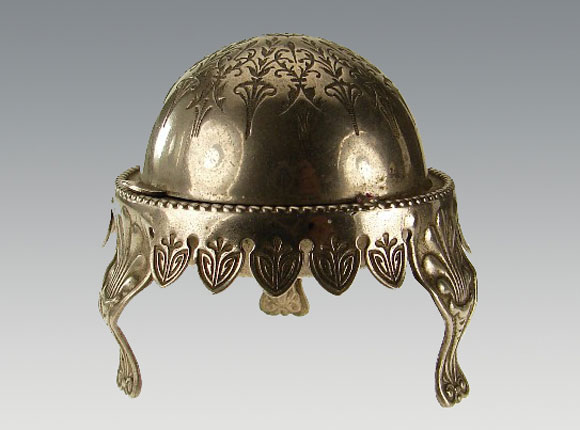
Needle Case
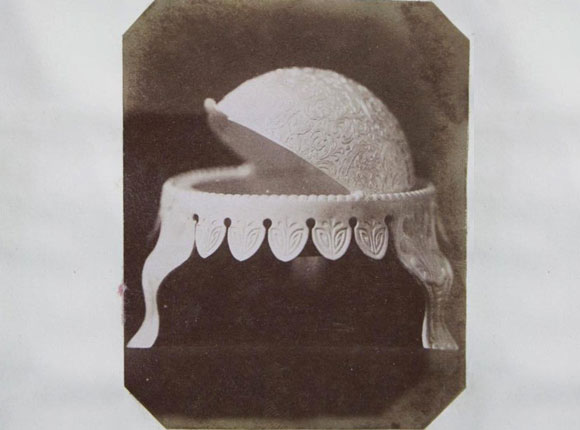
Design Representation
Design Details
Needle Case Type: |
Figural (not listed on design registration as a needle case) |
Patent/Registered to: |
Buncher & Haseler - Birmingham |
Patent/Design Representation #: |
Rd30181 |
Patent/Design Registration Date: |
July 21, 1885 |
Location of Patent/Design Registration: |
The National Archives (TNA) - Kew, UK |
Reference #: |
TNA Representation - BT 50/39/30181
TNA Register - BT 51/15/30181 |
Dimensions: |
7.4 diameter x 6.5 |
Material: |
Nickel-silver |
Name Variations: |
W. Avery & Son - Redditch |
Other Variations: |
None |
Additional Photographs
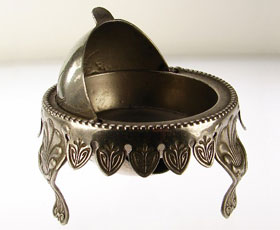
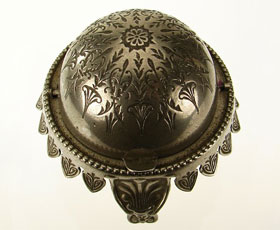
Side/top open and top

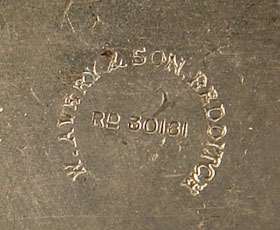
Bottom and signature detail
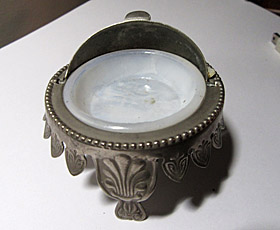
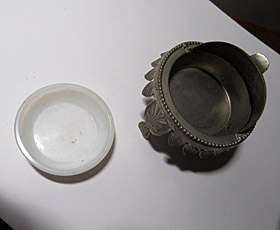
Version with interior white opaline type liner (photographs courtesy of Gilles Dussault).
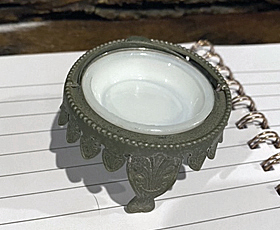
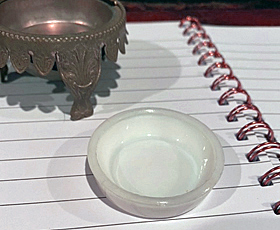
Version with interior white opaline type liner (photographs courtesy of Karla Butler).
To date only three versions with this liner have been seen by the authors of this website, two which are displayed here. It is unknown whether the liner is an original part
of this needle case or a later addition. If you have this needle case with this interior liner, please contact us so we can compare yours to these. If more examples
with the exact same liner are known to exist it will help us authenticate the liner.
Facts
Roast beef is a traditional British food. In the Victorian era appearances were very important, so a special trolley dedicated to the
serving of roast beef at the table of the diner, particularly if made from ornately carved wood and polished silver, would have been a
prestigious addition to the dining experience. Simpson’s-in-the-Strand which was mentioned in the “Popular Guide to London and Its
Suburbs” (1862) and “Routledge’s Popular Guide to London” (1873) still today maintains roast beef served at the table from their antique
beef serving cart, a tradition of over 150 years, in their fare.
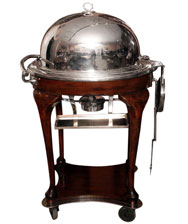
History
The breeding of cattle for meat rather than dairy products is thought to have originated in Britain as early as the 15th century. In
early times beef was roasted turning on a spit with an open fire. Less affluent families did not have means to have large cuts of meat
or open fires so would have their “roast” cooked, whilst at church, at the bakehouse in the bread ovens which were not used for bread on a
Sunday thus giving rise to the term Sunday roast. The song The Roast beef of Old England written in 1731 is a patriotic ballad written
by Henry Fielding. It became customary for theatre audiences to sing this anthem at theatre performances and it is still played at mess
dinners of the Royal Navy. It begins with the words –
When mighty Roast Beef was the Englishman's food,
It ennobled our brains and enriched our blood.
Our soldiers were brave and our courtiers were good
Oh! the Roast Beef of old England,
And old English Roast Beef!
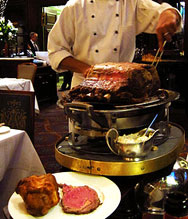
Miscellaneous
Beefeaters are the scarlet and gold liveried soldiers that belong to two companies, the Yeomen of the Guard, formed in 1485 by Henry VII to
be his personal bodyguard and the Yeomen Warders who since the time of Henry VIII have had the role of guarding prisoners in the Tower of
London and guarding the crown jewels. Their state dress uniforms are similar except for the cross belt worn from the left shoulder of
the Yeomen of the Guard. The name beefeater is most likely to have originated from the time when the Yeomen Warders at the Tower were
paid part of their salary in beef. This occurred up until the 1800s. One of the duties of the Yeomen Warders is to care for the ravens
at the Tower. Legend has it that should the ravens that have lived at the Tower since at least the reign of Charles II ever leave,
the monarchy and Tower will crumble.
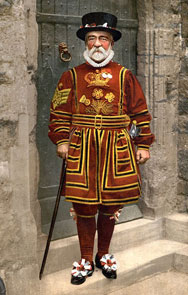
Note: Right side panel text and photos provided by Lynda Herrod.

















